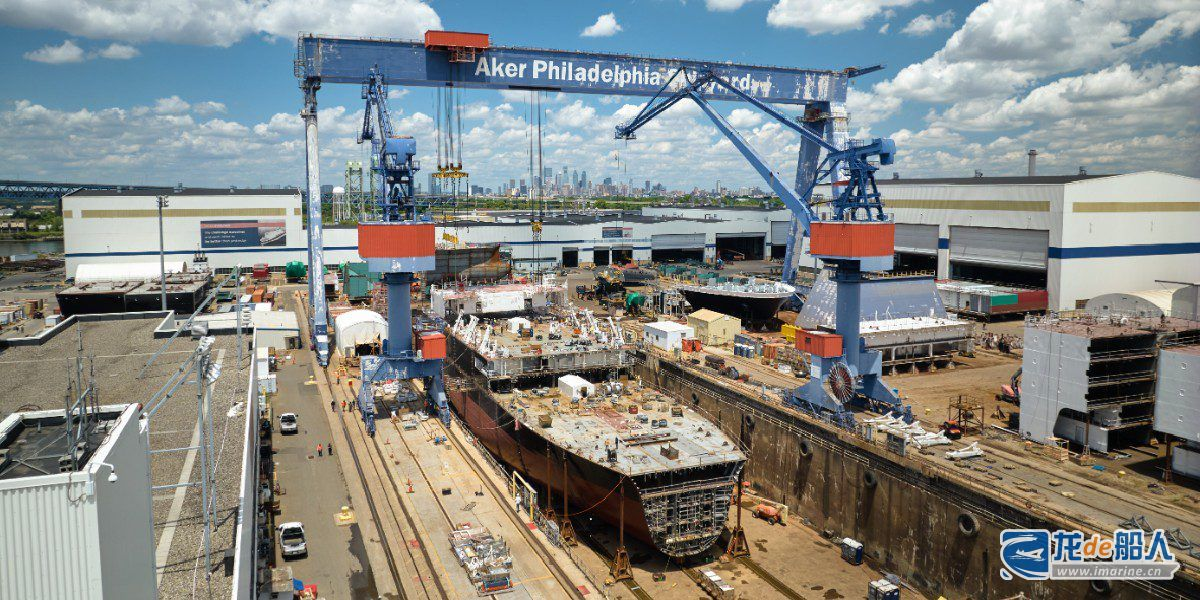Hanwha Group plans to spend heavily on upgrading its recently acquired Philly shipyard, increasing the yard’s revenue to about $4 billion and annual capacity to 10 ships within a decade, with plans to make it the first U.S. shipyard to build liquefied natural gas (LNG) carriers.

Recently, Hanwha Group revealed during a site visit to Hanwha Philly Shipyard that it has formulated a revenue plan for the Hanwha Philly Shipyard for the next 10 years, i.e., to grow from US$368 million in 2024 to approximately US$4 billion in 2035, which is more than 10 times the current revenue level, and the target amount accounts for Hanwha Ocean, a shipbuilding subsidiary of Hanwha Group, to have a total revenue of KRW 10.78 trillion by 2024, which is nearly 50 percent of the total revenue.
In addition to the revenue plan, Hanwha Group announced a $72 million investment to upgrade the Hanwha Philly shipyard into a high-tech shipyard, increasing its annual capacity from about 1.5 ships today to up to 10 ships by 2035, about seven times higher than current levels. The investment will be used for shipyard upgrades and automation of shipbuilding processes.
At present, Hanwha Philly Shipyard mainly operates Dock 4 and Dock 5, which are used for shipbuilding and mooring respectively. Hanwha Ocean plans to restore the production capacity of Dock 5 and increase the annual production capacity of Docks 4 and 5 to 3 to 4 ships, and the overall annual production capacity to 8 to 10 ships. To this end, Hanwha Group has sent more than 50 shipbuilding experts to Hanwha Philly Shipyard to assess the current situation of the shipyard and take measures to improve production efficiency and modernize facilities.
It is understood that Philly Shipyard was established in 1997, formerly known as the U.S. Navy’s Philly National Shipyard, covers an area of 480,000 square meters, has the largest shipyard in the U.S., and specializes in the construction of merchant ships used for coastal transportation. In late 2024, Hanwha completed the acquisition of Philly Shipyard for approximately $100 million and announced a name change to Hanwha Philly Shipyard.
There have been reports that the Philly shipyard has made little investment since its establishment. To improve shipbuilding efficiency, Hanwha Group plans to introduce welding robots and other automated equipment to Hanwha Philly Shipyard and double its current workforce from 1,500 to 3,000 by 2035.
Korean media reported that the U.S. determination to “revitalize the shipbuilding industry” is a positive prospect for Hanwha Group’s investment in Hanwha Philly Shipyard. Recently, the U.S. announced plans to expand its strategic maritime fleet to 250 ships. Under the Jones Act, ships operating on U.S. coastal routes must be built in U.S. shipyards, meaning that new orders are likely to flow to domestic shipyards.
As one of the major shipyards in the U.S., Hanwha Philly Shipyard is the source of about 50 percent of the U.S. Jones Act-compliant large merchant ships, including tankers and container ships. In this regard, Hanwha Group aims to ensure that this “new” US shipyard receives more orders for new ships.
In addition, U.S.-produced LNG must be transported on U.S. shipyard-built LNG carriers for 1 percent of exports by April 2028, increasing to 15 percent by 2047, according to a policy requirement from the Office of the U.S. Trade Representative (USTR). However, industry insiders remain skeptical about the feasibility of this requirement, given the deterioration of the U.S. shipbuilding industrial base and labor conditions.
Currently, there is no shipyard in the U.S. capable of building LNG carriers. If Hanwha Group’s development plan comes to fruition, Hanwha Philly Shipyard will be able to enter the field of LNG carrier construction through Hanwha Ocean’s transfer of technology, and it will no longer be limited to specializing in the construction of 2,600-3,600 TEU class container ships and 50,000 DWT class tankers. At the same time, the shipyard is expected to become an important base for the U.S. Navy’s shipbuilding and maintenance, repair and Overhaul (MRO) business in the future.


